| Common Name | |
|---|---|
| Type | |
| Family | |
| Native Range | Eastern and Central United States |
| Native? | US Native Plants |
| Zone | 3, 4, 5, 6, 7, 8, 9 |
| Height Range (ft.) | 1.50 to 3.00 |
| Spread (ft.) | 1.00 to 2.00 |
| Bloom Time | |
| Bloom Description | pale yellow to pink with purple spots, Showy, surrounded by layered, lavender-pink bracts, tubular flowers in whorled clusters |
| Sun | |
| Water | |
| Maintenance | |
| Suggested Use | Dry Meadows, native plantings, Pollinator Garden, prairies, xeriscaping, |
| Tolerate | |
| Growth Rate | |
| Attracts |
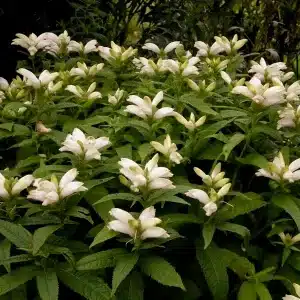
Monarda punctata is a drought-tolerant native Beebalm with whorled, spotted flowers and pink bracts that bloom late summer and attract a wide array of pollinators.
$12.99 – $129.99
Please note: Sizes 1.5 Gallon and up can’t be shipped outside the counties of Nassau, Suffolk, Brooklyn, and Queens.
Learn more about how the process works and how our plants are delivered.
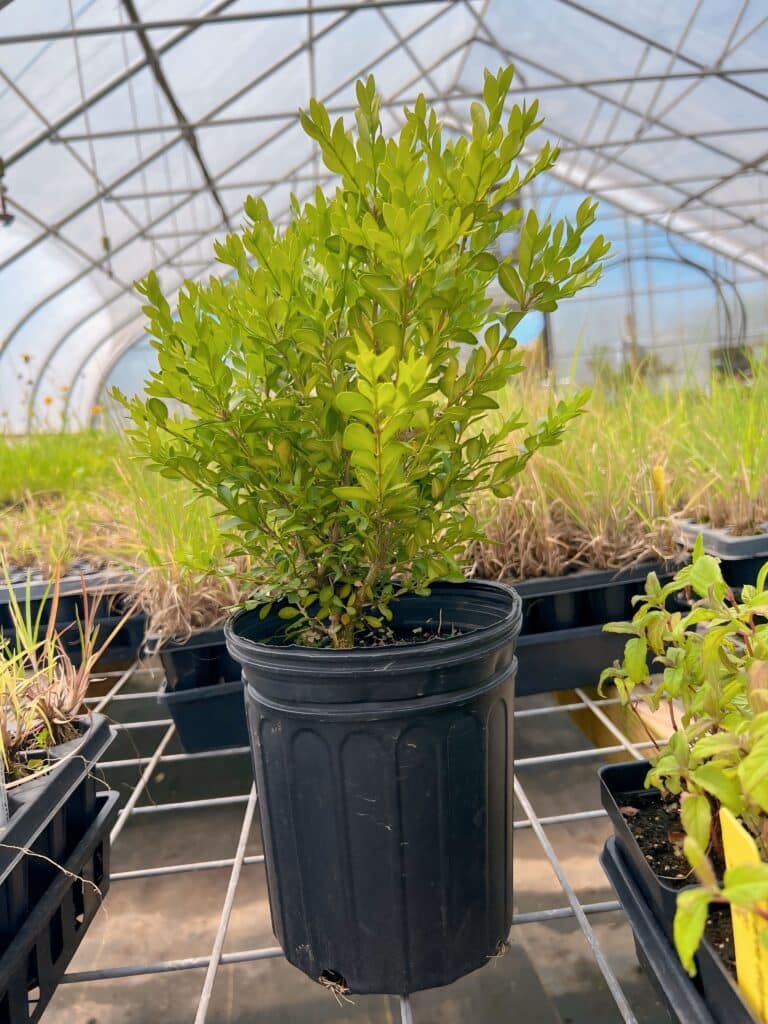

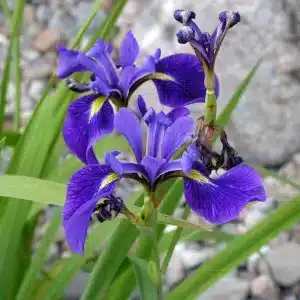
| Common Name | |
|---|---|
| Type | |
| Family | |
| Native Range | Eastern and Central United States |
| Native? | US Native Plants |
| Zone | 3, 4, 5, 6, 7, 8, 9 |
| Height Range (ft.) | 1.50 to 3.00 |
| Spread (ft.) | 1.00 to 2.00 |
| Bloom Time | |
| Bloom Description | pale yellow to pink with purple spots, Showy, surrounded by layered, lavender-pink bracts, tubular flowers in whorled clusters |
| Sun | |
| Water | |
| Maintenance | |
| Suggested Use | Dry Meadows, native plantings, Pollinator Garden, prairies, xeriscaping, |
| Tolerate | |
| Growth Rate | |
| Attracts |
Monarda punctata, commonly known as Spotted Beebalm or Dotted Mint, is a distinctive native perennial known for its whorled, tubular flowers in shades of pale yellow spotted with maroon, surrounded by showy pink to lavender bracts. This plant brings an airy, architectural quality to native plantings and thrives in dry, sandy, or well-drained soils. Blooming from mid-summer into fall, it attracts a wide range of pollinators including native bees, butterflies, and beneficial wasps, making it a powerful addition to any eco-friendly garden.
Unique appearance: Whorled flowers with pink bracts add a soft, layered texture
Extended bloom time: Flowers from mid-summer into fall, supporting late-season pollinators
Heat and drought tolerant: Thrives in tough, dry conditions where many other perennials struggle
Sun exposure: Full sun is ideal, though it will tolerate some light shade
Soil needs: Prefers sandy or well-drained soils; excellent for dry gardens
Maintenance: Minimal—deadheading is optional; self-seeds in favorable conditions
Wildflower meadows: A beautiful addition to dry, sunny native plantings
Pollinator strips: Perfect for supporting bees, butterflies, and beneficial insects
Herbal or medicinal gardens: Historically used for its aromatic and medicinal properties
Pollinator powerhouse: Supports native bees, butterflies, and predatory wasps
Diverse habitat: Adds both floral and structural diversity to native gardens
Low-resource gardening: Thrives with little water, fertilizer, or intervention
/5
Total reviews
|
|
Persons recommended this product
Anonymous
Shopper
check_circle Verified
Shop owner replied
Was this helpful
Anonymous
Shopper
check_circle Verified
Shop owner replied
Was this helpful
Your feedback helps us improve our service.
There are no reviews yet.
Be the first to review “ ”
Please log in to submit a review.
Only logged in customers who have purchased this product may leave a review
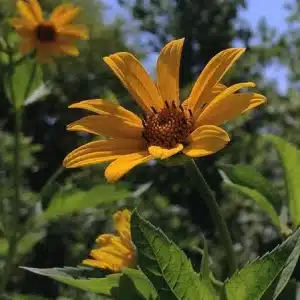

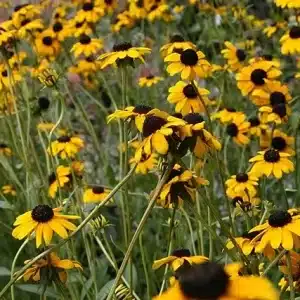
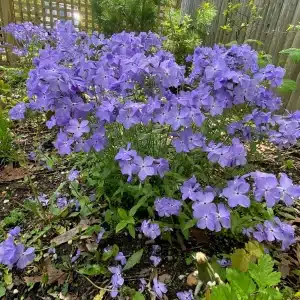
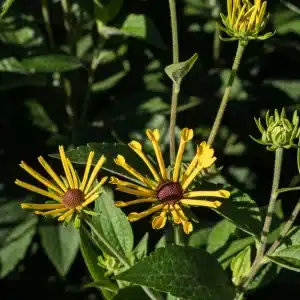
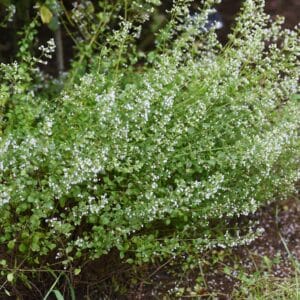
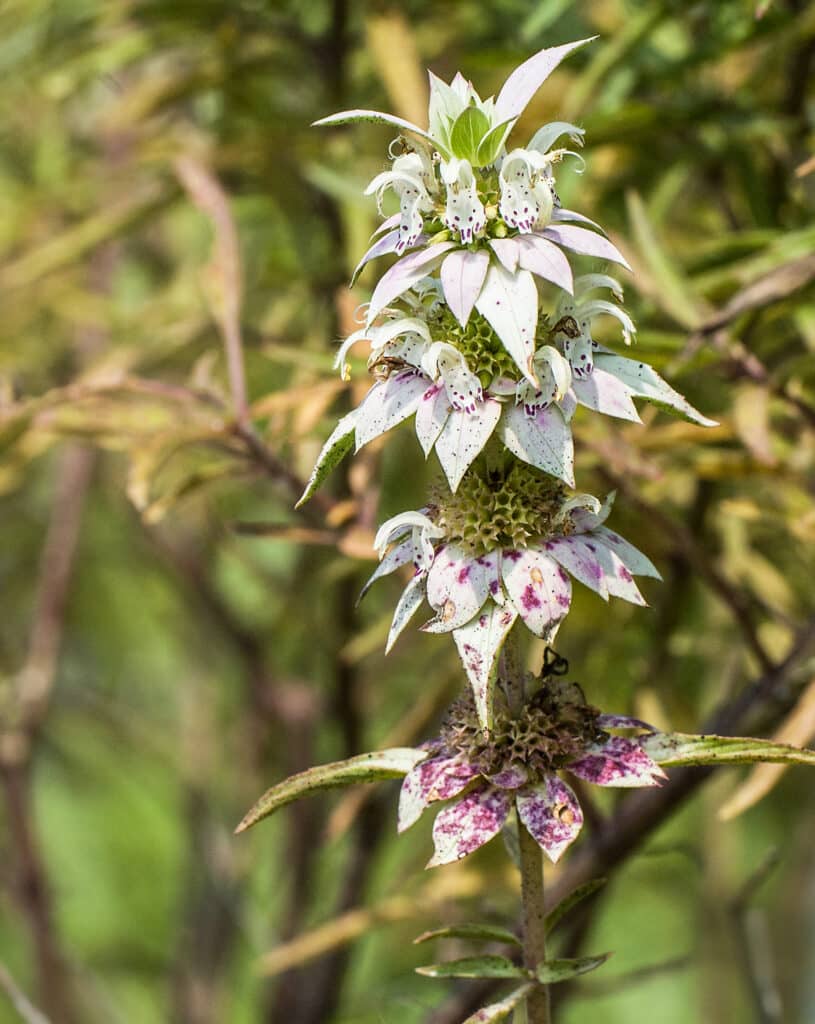
Spotted Beebalm typically grows 2 to 3 feet tall and spreads 1.5 to 2 feet wide. It has a branching, upright habit with a loose, open form, making it well-suited for meadows, prairies, pollinator gardens, and naturalistic plantings.
Monarda punctata thrives in full sun to part shade and prefers well-drained, sandy or rocky soils. It’s highly tolerant of drought, heat, and poor soils, making it ideal for xeriscaping and native restoration projects. It does not require rich or moist soil like other Monarda species.
Spotted Beebalm blooms in mid-to-late summer, typically July through September. It features whorls of tubular, pale yellow flowers spotted with purple, surrounded by showy lavender-pink bracts that are often mistaken for petals. The combination creates a striking and unique appearance.
Yes! Spotted Beebalm is deer-resistant and rabbit-resistant due to its strongly aromatic foliage. It is very low-maintenance, requiring little care beyond occasional deadheading and cutting back in late fall or early spring. It also self-seeds in ideal conditions, helping it establish natural colonies.
Absolutely! Monarda punctata is a magnet for pollinators, especially native bees, butterflies, and wasps, including beneficial predatory wasps. It’s one of the best native plants for supporting a diverse array of insect pollinators, making it an essential addition to pollinator and native plant gardens.
Our gift cards make it easy to share the beauty of plants, flowers, and all things green. Whether for a special occasion or just because, give the gift of choice and let them select their favorites to create a garden they’ll cherish.
BUYING HIGH QUALITY PLANTS HAS NEVER BEEN EASIER
Our plants are easy to order, plant, and enjoy! Bringing pollinators to your property improves vegetable yields – Feed the bees!
Sign up for our email list!
Copyright © 2025 Bumbee’s | Web design and SEO by Searles Graphics